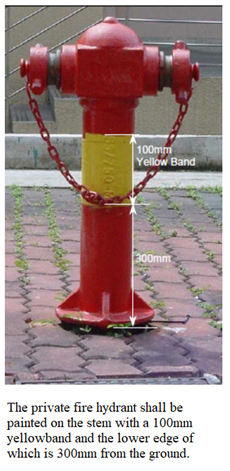4.4 FIRE HYDRANT
4.4.1 Provision of private fire hydrant
a. Every part of a fire engine access road and/ or fire engine accessway shall be within an unobstructed distance of 50m from a fire hydrant. Where a public hydrant conforming to such requirement is not available, private hydrant(s) shall be provided. See Diagram 4.4.1a..
b. Use of public fire hydrant
Existing public fire hydrants along one side of a public road shall not be designated to serve developments sited on the other side of the public road, except for a road having at most two lanes, regardless of traffic direction.
R Rationale - Clause 4.4.1bPublic roads with multiple lanes will likely have high volume of traffic. In the event where only one fire hydrant exists, traffic would be blocked in order for firefighters to utilize the hydrant on the opposite side of the road. This will create congestion or roadblock, thus disrupting traffic.
c. Locations of fire hydrants
In situations where more than one private fire hydrants are required, the fire hydrants shall be located along the fire engine accessway/ fire engine access road such that every part of the fire engine accessway/ fire engine access road is within an unobstructed distance of 50m from any fire hydrant. See Diagram 4.4.1c..
d. Siting and types of fire hydrants
Siting and types of fire hydrants shall comply with the requirements stated in SS 575.
e. Ringed fire hydrant pipes
For a station that is required to have an island site fire engine accessway, the fire hydrant pipe shall be a ring system. Isolation valves shall be provided on the fire hydrant ring such that on any section of ring, not more than one fire hydrant can be isolated when required for maintenance without affecting the water supply (both designed pressure and flow) to the other fire hydrants on the ring.
f. Valve locking device
A locking device shall be provided to lock the valves in open position during normal operation. Underground valves shall be kept in an open position at all times.
4.4.2 Water supply for private fire hydrant
The provision of water supply for a private fire hydrant system, where required by this Code, shall comply with the following requirements:
a. Private fire hydrant at or below reduced level 125m
(1) Private fire hydrants installed at reduced level 125m and below can receive direct supply from public water mains provided the flow and pressure from the public water mains meet the fire hydrant requirements as shown in Table 4.4.2, or the following requirements are complied with:
(a) the AFA of the largest compartment shall not exceed 1000m2;
(b) the nominal bore of the fire hydrant pipe and the bulk water meter shall not be less than 150mm in diameter; and
(c) the running pressure/ flow at the hydraulically most unfavourable fire hydrant of the private fire hydrant system shall comply with the following:
(i) running pressure >= 0.9 x (running pressure of the nearest public fire hydrant – pressure drop across the bulk water metre); and
(ii) flow rate >= 0.9 x water flow of the nearest public fire hydrant or >= total flow demand (as required in Table 4.4.2) of the private fire hydrant system, provided the running pressure at the most remote private fire hydrant is greater than 2 bars.
Note: In calculating the frictional loss for the private fire hydrant system, the design flow rates shown in Table 4.4.2 shall be used. The pressure drops across bulk water metre shall not be more than 1 bar.
(2) If the requirements stipulated in Cl.4.4.2a.(1) cannot be met, a storage tank of sufficient capacity meeting the flow rate and duration as specified in Table 4.4.2 with the requisite pumping facilities shall be provided.
| TABLE 4.4.2: WATER SUPPLY & STORAGE REQUIREMENT FOR PRIVATE FIRE HYDRANT | ||
|---|---|---|
| Minimum running pressure | 2 bars | |
| Minimum duration | 45 mins | |
| Minimum flow rate | Accessible Floor Area* (m2) | Minimum flow rate |
| ≤ 1000m2 | 38 L/s | |
| >1000m2 and ≤ 5000m2 | 57 L/s | |
| > 5000m2 | 76 L/s | |
|
Note: * - Based on the Accessible Floor Area (AFA) of the largest compartment in the station |
||
b. Private fire hydrant above reduced level 125m
R Rationale - Clause 4.4.2bPrivate hydrant located above the reduced level of 125m is required to be charged with water at all times so that firefighters could use them to feed the breeching inlets to rising mains for firefighting purposes.
(1) Where more than one private fire hydrant is located above reduced level 125m within the same plot, storage and pumping arrangements of water supply to these specified fire hydrants shall comply with the requirements stipulated in Cl.4.2.2c..
(2) The private fire hydrant can be in the form of a dry fire hydrant, if it is not the sole fire hydrant within 50m from any breeching inlet(s) feeding firefighting systems for the station(s) within the plot of land, which include:
(a) automatic fire sprinkler systems, or
(b) dry riser systems.
(3) A dry fire hydrant shall comply with all of the following requirements:
(a) A dry private fire hydrant shall be connected to a 150mm diameter dry pipe, which shall be connected at the other end to a four-way breeching inlet.
(b) This breeching inlet shall be within 18m from any fire engine accessway/ fire engine access road having minimum 4m width and within 50m from any wet fire hydrant, private or public.
(c) The private dry pillar shall be painted in “yellow” and labelled “dry” on the fire hydrant pillar. E
(d) A signage indicating the location of breeching inlet shall be positioned next to the dry private fire hydrant.
c. Water supply and storage requirement
Where more than one private fire hydrant is located above reduced level 125m within the same plot, storage and pumping arrangements of water supply to these specified fire hydrants shall comply with those for wet rising mains stipulated in SS 575 and Table 4.4.2.
4.4.3 Protection of hydrant mains in stations
R Rationale - Clause 4.4.3Hydrant mains supplying water to hydrant(s) shall be appropriately protected to prevent any damage from fire or the carrying out of addition/alteration works within the station. The hydrant mains, if damaged would affect the firefighting operation in an emergency.
All hydrant mains which pass through a station shall have its full length within the station protected with fire resistance construction of at least the same fire resistance as the element of structure, provided all of the following requirements are complied with:
a. The fire hydrant mains shall be located in common circulation areas, such as car parking spaces (except spaces used for mechanical car parking) and driveways, i.e. they shall not pass through private or confined spaces.
b. No services other than sprinkler pipe shall be located above or crossing over the fire hydrant mains. Where services need to cross-over the hydrant mains, the following conditions shall be complied with:
(1) the services shall only cross over the fire hydrants mains perpendicularly;
(2) the tensile stress of the supports for the services shall not exceed 10N/mm2; and
(3) the services shall be adequately protected by the station’s sprinkler system.
c. The fire hydrant mains shall be located away from explosion risk areas.
d. The protective enclosure to the fire hydrant mains shall be labelled with the words “FIRE HYDRANT MAIN” of minimum 50mm height at suitable intervals E
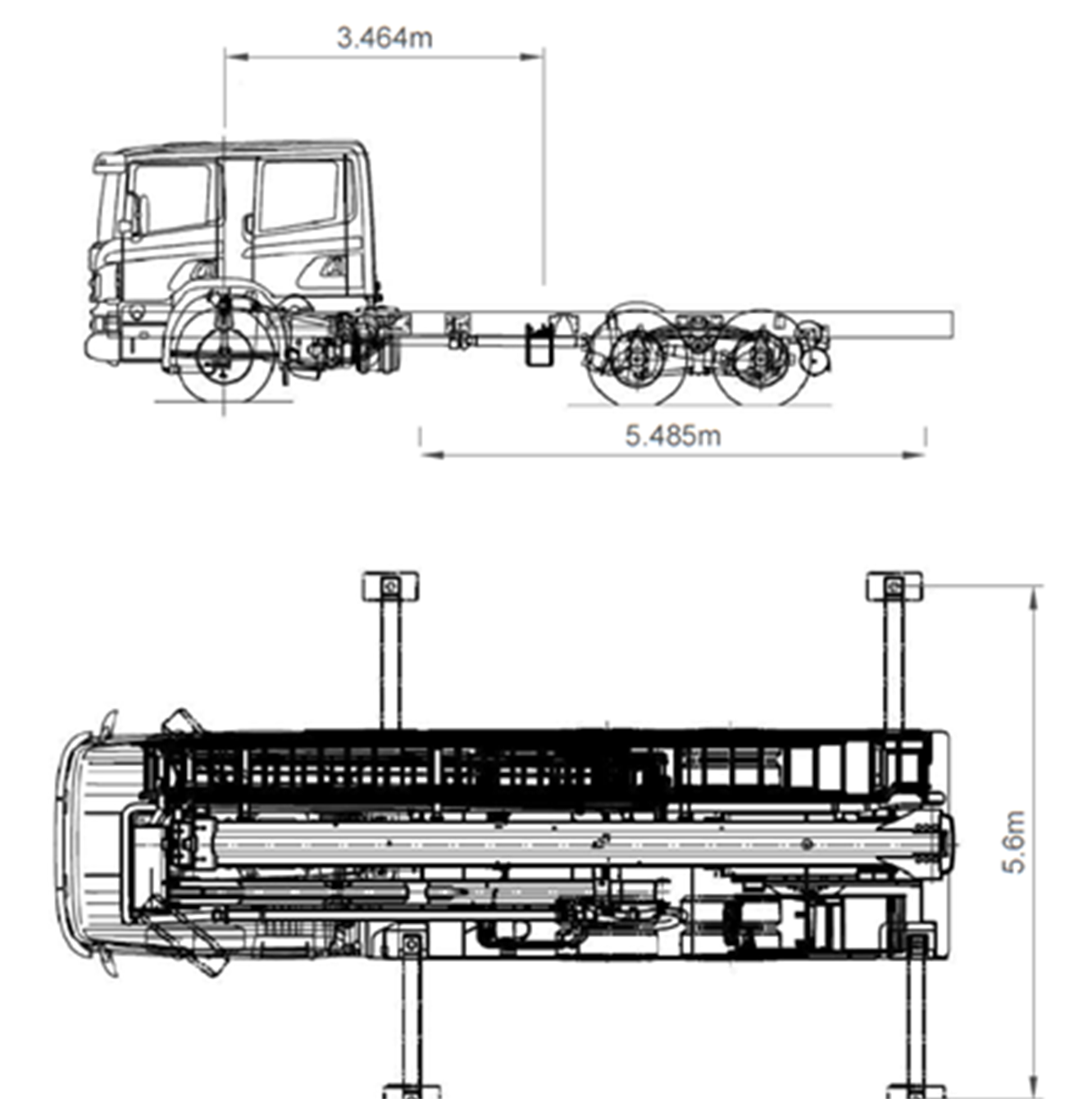
Diagram 4.2.4d.(1) – 1: CPL 34 Firefighting Appliances – Wheels & Jacks Layout
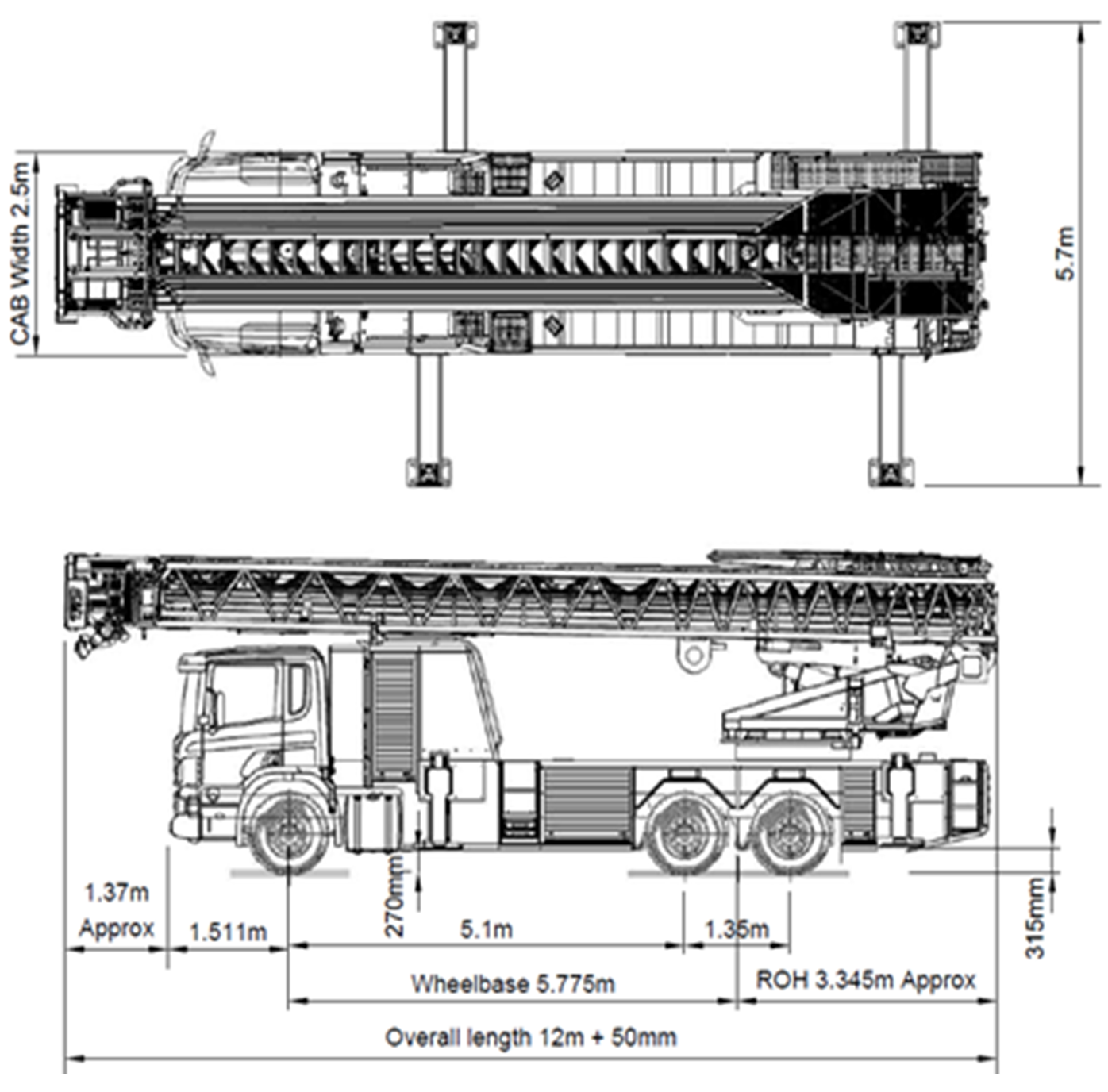
Diagram 4.2.4d.(1) – 2: AL 56 Firefighting Appliances – Wheels & Jacks Layout
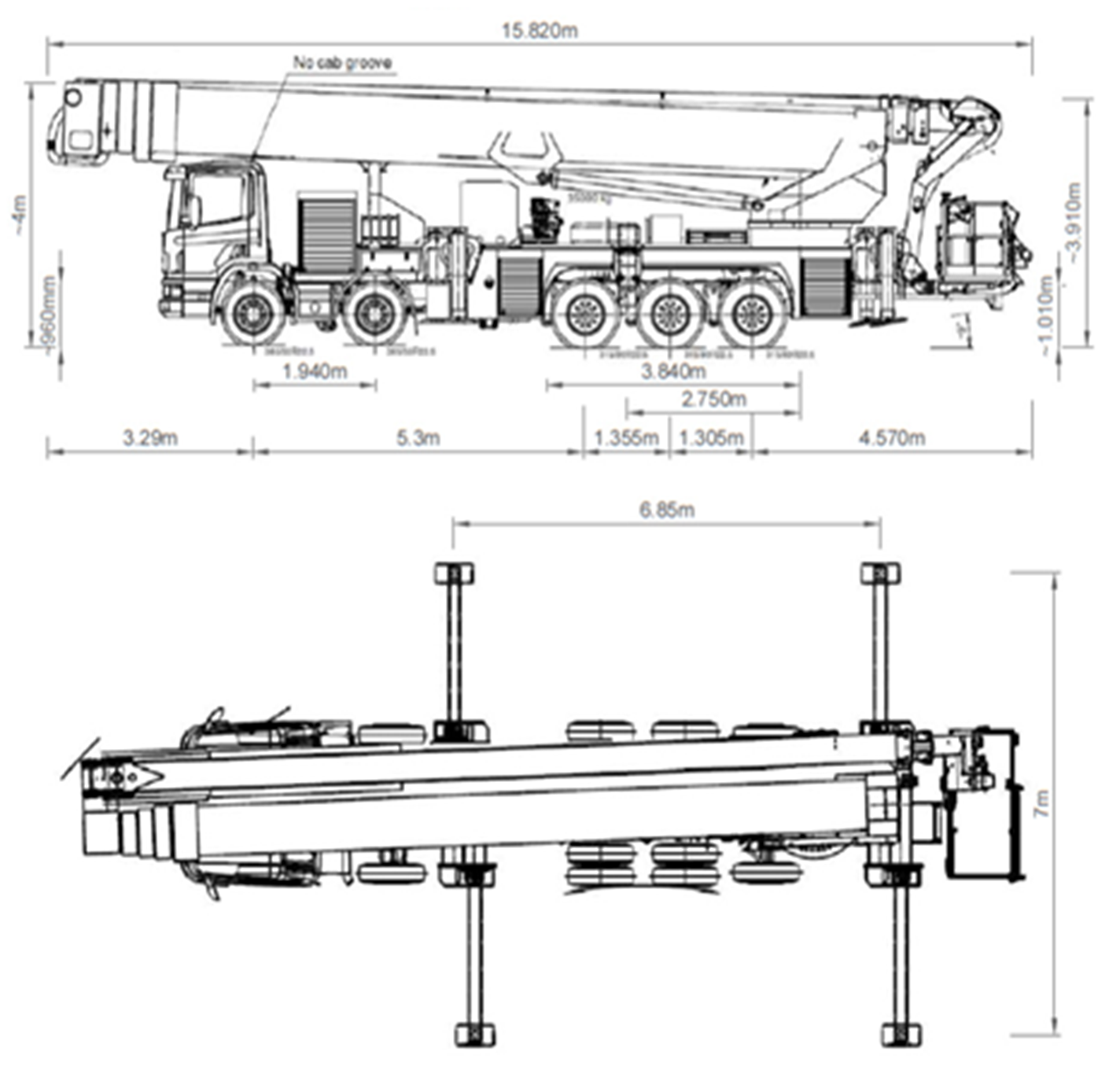
Diagram 4.2.4d.(1) – 3: HL 90 Firefighting Appliances – Wheels & Jacks Layout
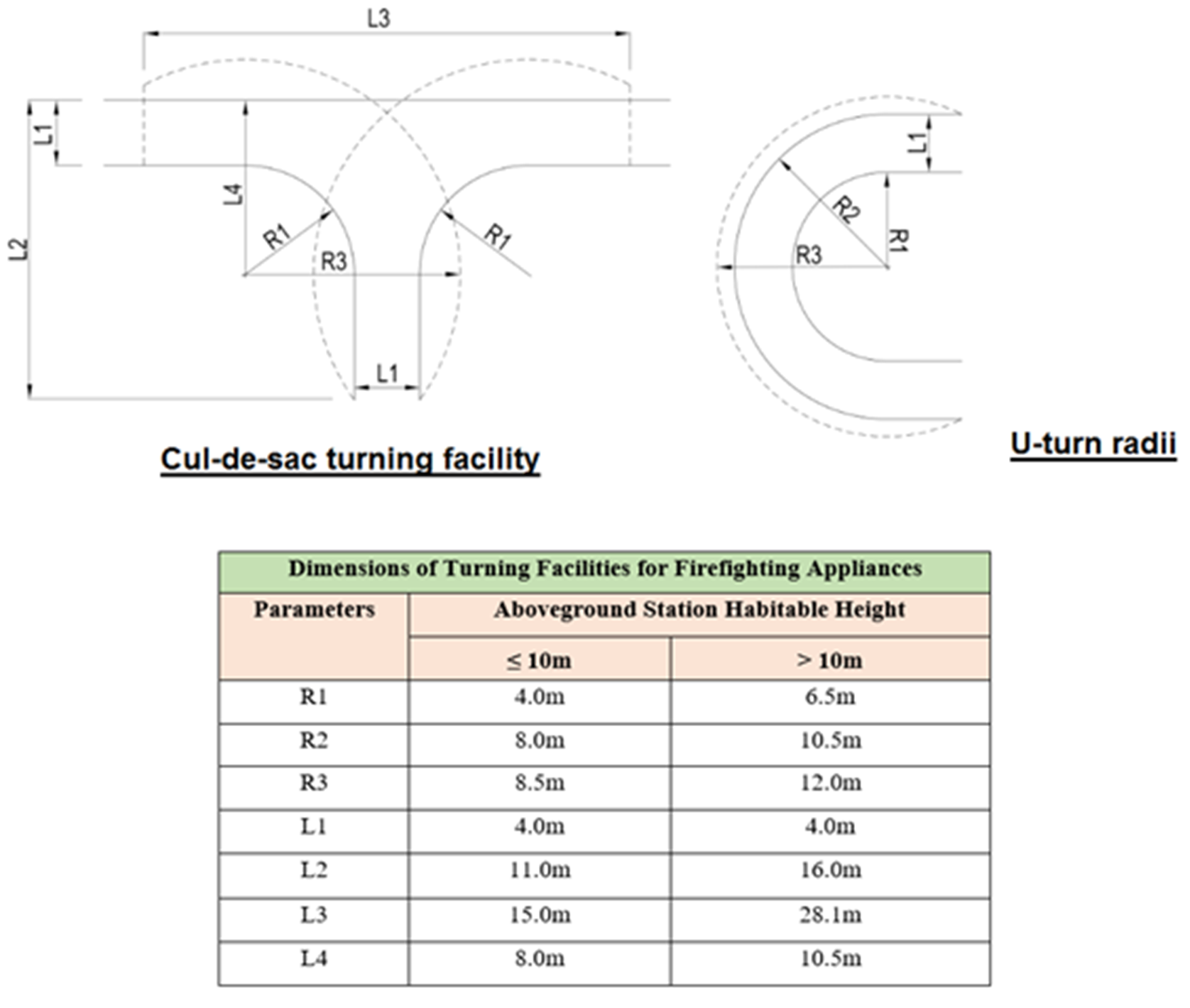
Diagram 4.2.4f. – Turning Facilities for Firefighting Appliances
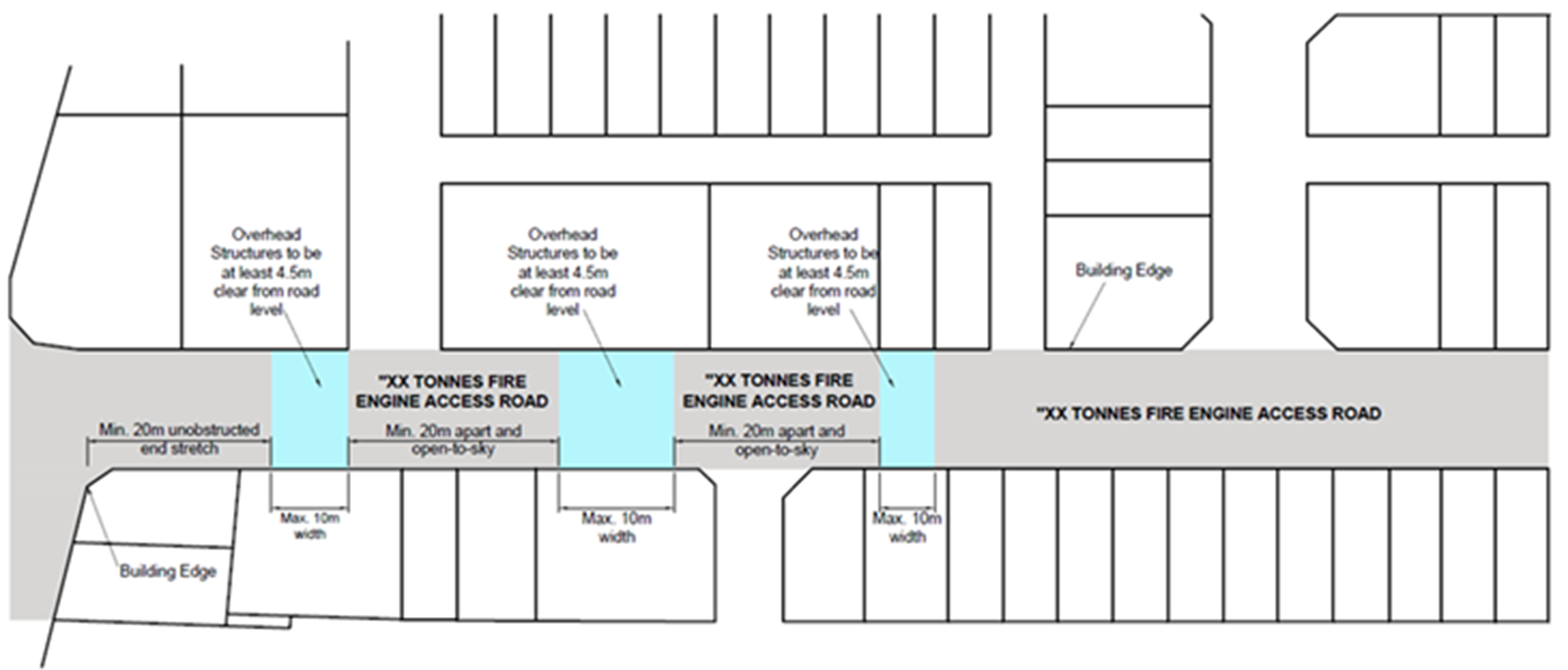
Diagram 4.2.4g.: Overhead Structures Over Fire Engine Accessway/ Fire Engine Access Road
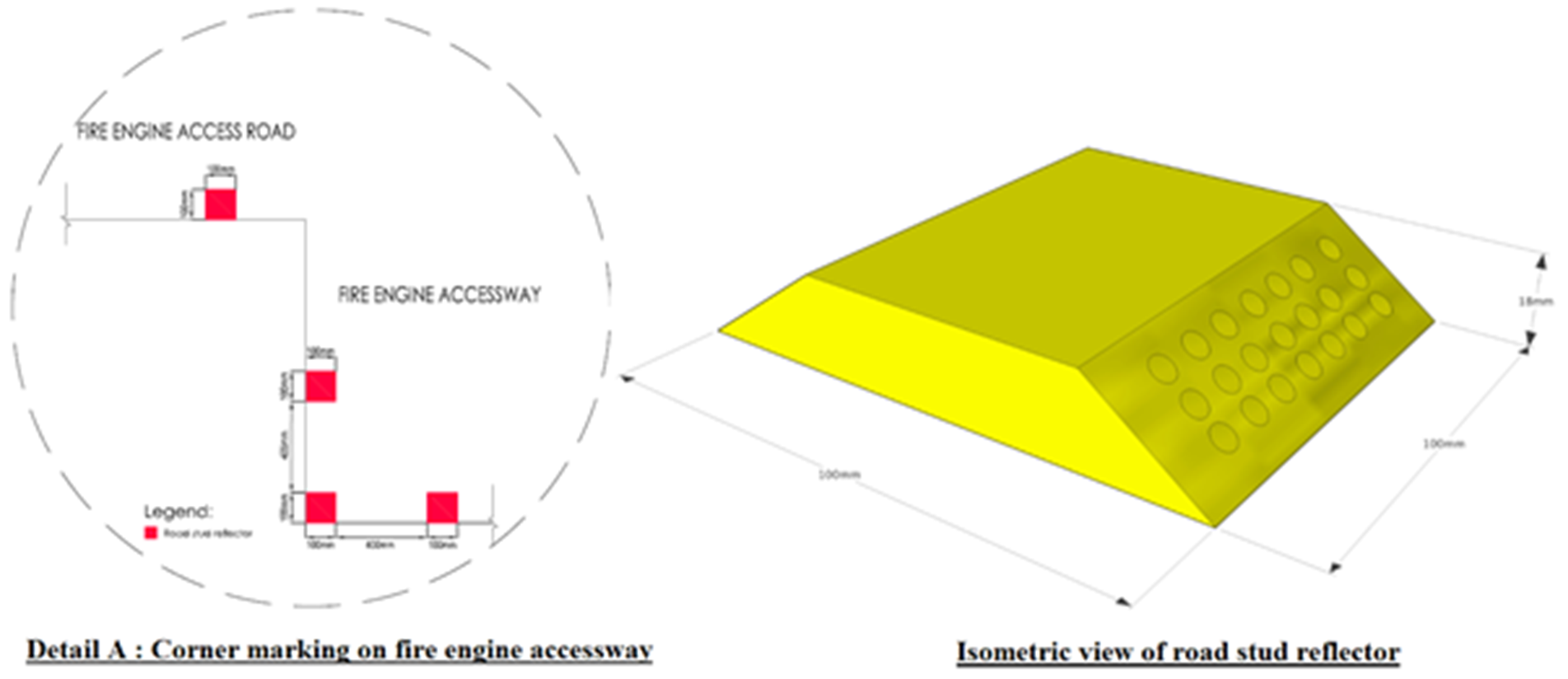
Diagram 4.2.4j.(2): Markings for Fire Engine Accessway/ Fire Engine Access Road
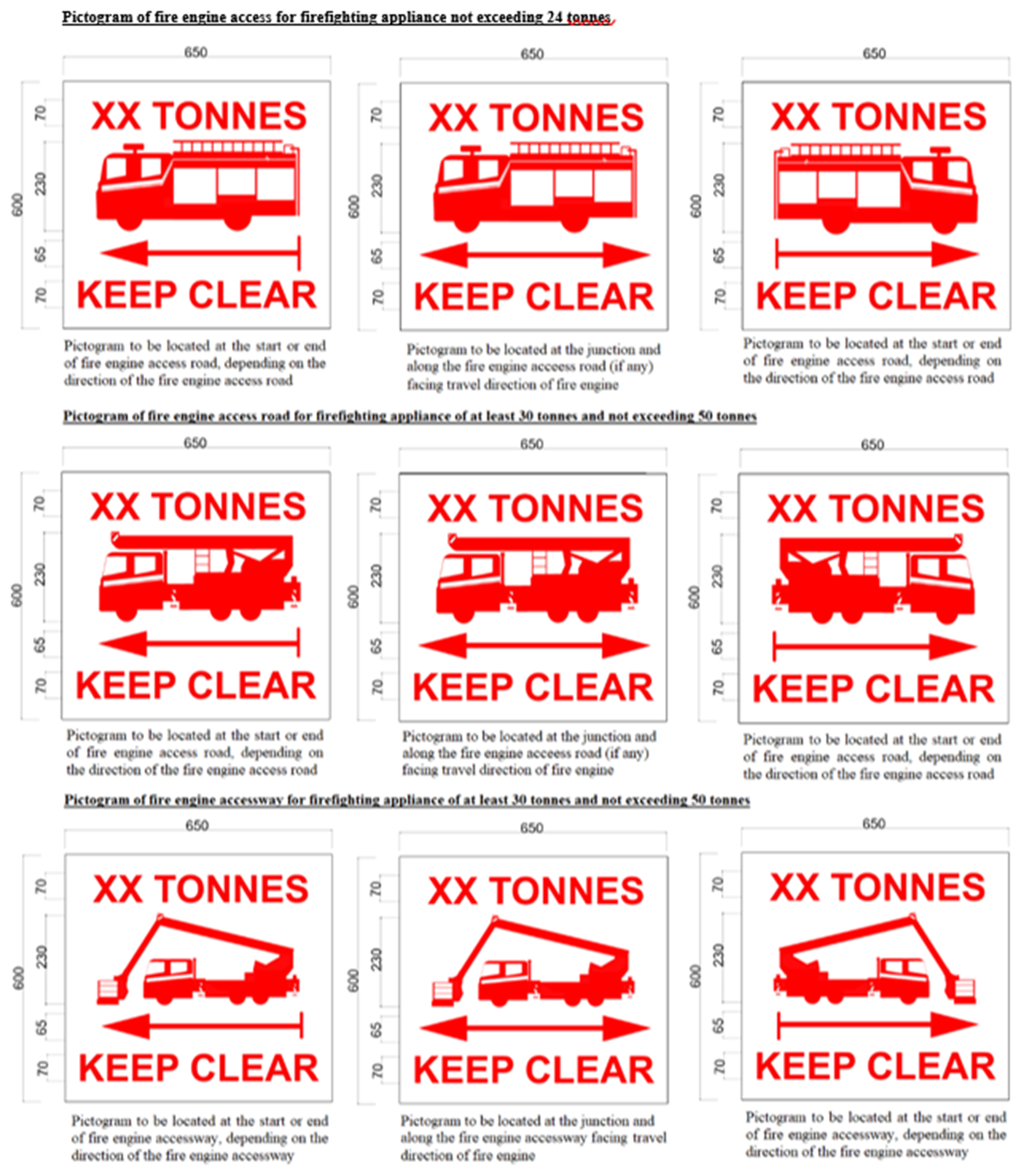
Diagram 4.2.4j.(3): Pictogram signage for Fire Engine Accessway/ Fire Engine Access Road
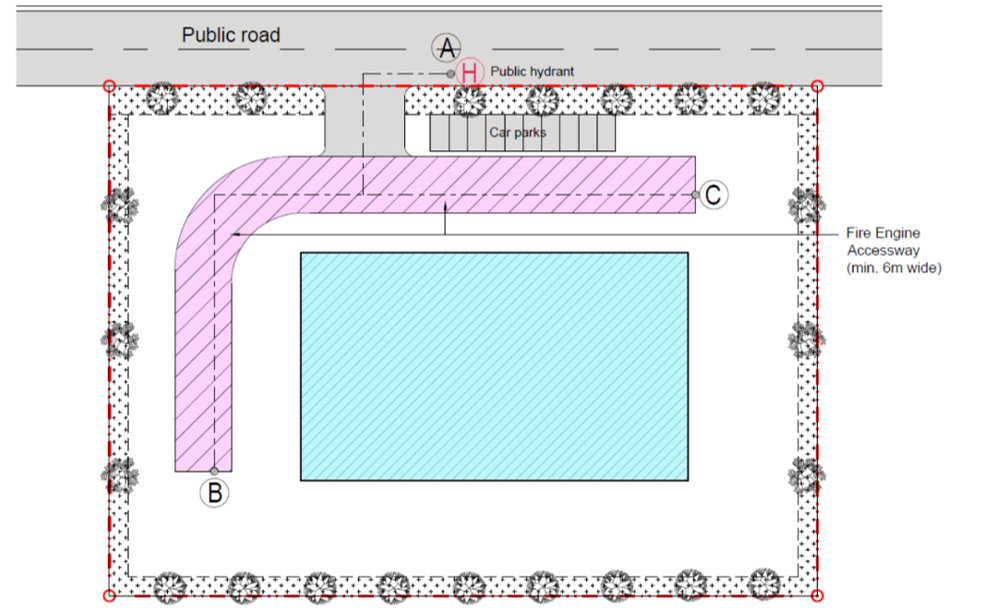
Point A to B or C ≤ 50m Every part of a fire engine accessway/ fire engine access road in a private lot shall be withing an unobstructed distance of 50m from a hydrant. Where a public hydrant conforming to such requirement is not available, private hydrant(s) shall be provided.
Diagram 4.4.1a.: Provision of Private Fire Hydrant
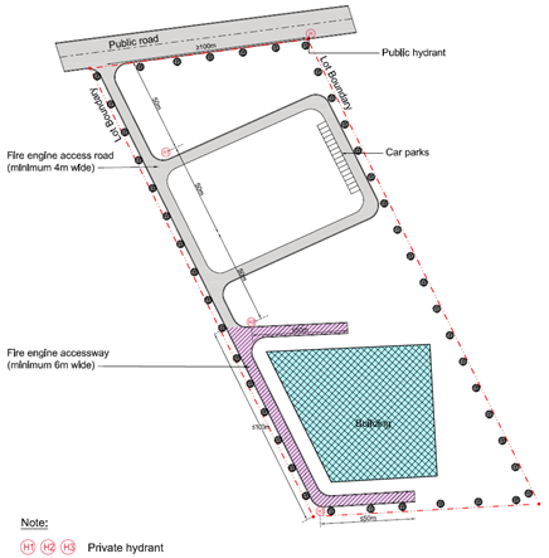
In a situation where more than one private hydrant is required, the hydrants shall be located along the fire engine accessway/ fire engine access road such that every part of the fire engine accessway/ fire engine access road is within an unobstructed distance of 50m from any hydrant.
Diagram 4.4.1c.: Siting of Private Fire Hydrant
 ) or https:// as an added precaution. Share sensitive
information only on official, secure websites.
) or https:// as an added precaution. Share sensitive
information only on official, secure websites.

